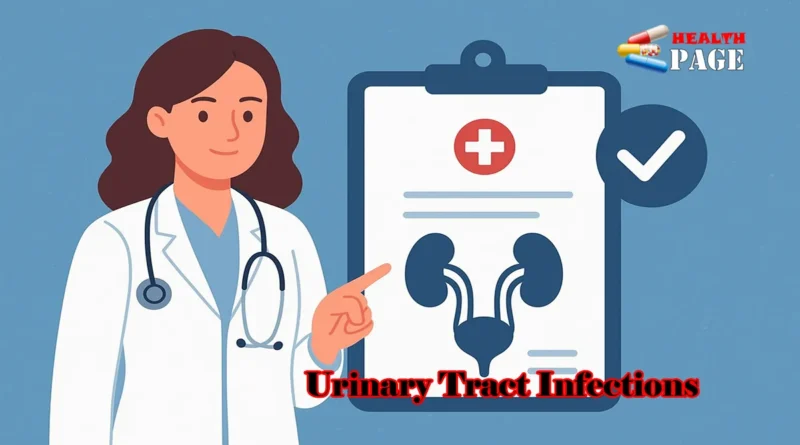Top 10 Recurrent UTI ICD 10 Insights That Could Save Your Health History
Urinary tract infections (UTIs) are uncomfortable, disruptive, and unfortunately for some people, recurrent. If you’ve ever had more than one UTI in a short period, you know how frustrating it can be to deal with the cycle of antibiotics, discomfort, and worry. That’s why the medical coding world uses “Recurrent UTI ICD 10” to help track, diagnose, and manage these cases more effectively. Understanding what this code means — and how it affects your health history — could actually make a difference in your future care.
In this article, we’ll break down 10 crucial insights about recurrent UTI ICD 10 that can empower you to understand your diagnosis, advocate for better treatment, and even prevent future complications.
1. What Does “Recurrent UTI ICD 10” Actually Mean?
The term recurrent UTI ICD 10 refers to the coding system doctors and healthcare providers use to classify repeated urinary tract infections. Specifically, ICD-10 is the International Classification of Diseases, 10th Revision, a global standard used in healthcare for billing, medical records, and statistics.
When you have multiple UTIs within a short timeframe, your doctor may record it under a specific recurrent UTI ICD 10 code (often N39.0 for urinary tract infection, site not specified). This coding helps keep track of your medical history and ensures you get proper care.
👉 Think of it as a medical “bookmark” in your health records that alerts providers: “This patient has had repeated UTIs before.”
2. Why Tracking Recurrent UTIs Matters
Having a history of recurrent UTI ICD 10 on your medical chart is more than just paperwork — it’s a signal for your doctors to look deeper into possible causes.
Common reasons why UTIs may come back include:
- Anatomical differences (more common in women)
- Hormonal changes (like menopause)
- Chronic dehydration
- Uncontrolled diabetes
- Poor bladder emptying (sometimes linked to prostate issues in men)
📌 Real-life example: If your provider sees multiple entries with the history recurrent UTI ICD 10, they might investigate whether your kidneys or bladder have structural issues. Without this coding, the pattern might go unnoticed.
3. The Specific Recurrent UTI ICD 10 Code You Should Know
The ICD-10 system is highly detailed. For recurrent UTIs, the most common code used is:
- N39.0 – Urinary tract infection, site not specified
However, depending on your history and circumstances, related codes may also appear in your medical records.
| ICD-10 Code | Meaning |
|---|---|
| N39.0 | UTI, site not specified |
| N30.0 | Acute cystitis (bladder infection) |
| N30.1 | Interstitial cystitis (chronic bladder issue) |
| N30.2 | Other chronic cystitis |
This means your recurrent UTI ICD 10 code might vary slightly, but the purpose is always the same — to document the condition for your ongoing care.
4. How ICD 10 Impacts Your Health History
Your health history is like your medical fingerprint. Every code entered — especially history of recurrent UTI ICD 10 — helps paint a picture of your overall health journey.
Why it matters:
- Continuity of care: A new doctor can quickly see your history.
- Insurance approvals: Codes are used in billing, so treatments like long-term antibiotics may need proof of recurring UTIs.
- Research & statistics: These codes help public health experts track infection patterns.
💡 Without proper coding, your medical history may look incomplete, which can affect both treatment and coverage.
5. Preventive Care Gets Easier With Proper Coding
Having the correct recurrent UTI ICD 10 code on file makes it easier for doctors to recommend preventive steps tailored to you.
Some preventive strategies include:
- Drinking more water throughout the day
- Urinating after sexual activity
- Avoiding excessive caffeine and alcohol
- Using prescribed prophylactic (preventive) antibiotics if recommended
- For women, discussing vaginal estrogen therapy post-menopause
📌 If your chart shows a history recurrent UTI ICD 10, doctors are more likely to take prevention seriously instead of treating each infection in isolation.
6. Better Communication Between Healthcare Providers
One underrated benefit of ICD coding is smoother communication. Imagine visiting a new doctor or even traveling abroad — your recurrent UTI ICD 10 entry ensures that professionals instantly understand your situation without needing a long backstory.
This shared medical language avoids confusion and helps you:
- Get quicker treatment during flare-ups
- Avoid unnecessary duplicate tests
- Ensure your prescriptions make sense based on your history
👉 In short, it saves you time, money, and frustration.
7. The Emotional Impact of Recurrent UTIs
While ICD-10 is a technical system, the reality is emotional. If you’ve dealt with more than two or three UTIs in a year, you already know it’s not just about medical terms. It’s about:
- Pain and discomfort disrupting your daily routine
- Fear of recurrence every time you feel a twinge
- Anxiety over antibiotics losing effectiveness
Having the recurrent UTI ICD 10 code in your history can bring peace of mind because it validates your struggle. It shows that your doctors recognize this is a recurring medical issue, not something you’re “just imagining.”
8. Insurance & Billing: Why ICD 10 Codes Matter Financially
Beyond healthcare, your history of recurrent UTI ICD 10 can also affect insurance. Here’s how:
- Accurate billing: Insurance companies often deny claims if codes don’t match.
- Justification for treatment: If you need preventive antibiotics, insurers require proof (the ICD-10 code provides it).
- Reduced out-of-pocket costs: Clear coding avoids claim disputes.
💡 Tip: Always check your medical bills to ensure your provider has included the correct recurrent UTI ICD 10 code. It can save you both money and hassle.
9. ICD 10 Codes Help Build Research Data
Every time your recurrent UTI ICD 10 code is entered, it contributes to a larger pool of medical data. Researchers use this information to:
- Understand infection patterns across different age groups
- Explore links between UTIs and other health conditions
- Develop better preventive strategies
In other words, your health record isn’t just personal — it plays a role in improving future treatments for millions of people worldwide.
10. Empowering Yourself With Knowledge
The final and most important insight: knowing about recurrent UTI ICD 10 empowers you. When you understand how coding works, you can:
- Ask your doctor whether your chart reflects a history recurrent UTI ICD 10
- Ensure your diagnosis is properly documented for future reference
- Advocate for better preventive and treatment strategies
📌 Remember: Your health history isn’t just paperwork — it’s a roadmap for your future well-being.
✅ Quick Recap: Why Recurrent UTI ICD 10 Matters
Here’s a simple breakdown:
- Recurrent UTI ICD 10 = Medical shorthand for repeated UTIs
- Helps providers see your history clearly
- Ensures insurance and billing accuracy
- Improves communication across healthcare systems
- Supports prevention and research
- Validates your experience as a patient
📊 Visual Aid: Difference Between One-Time and Recurrent UTI
| Aspect | One-Time UTI | Recurrent UTI (ICD 10 Coded) |
|---|---|---|
| Frequency | Happens once, usually treated with antibiotics | 2+ infections in 6 months or 3+ in a year |
| Coding | N39.0 or site-specific ICD-10 code | Recurrent UTI ICD 10 marked in chart |
| Treatment | Short antibiotic course | Preventive care, possible specialist referral |
| History | May not affect long-term health records | History recurrent UTI ICD 10 ensures proper documentation |
💬 Final Thoughts
Living with recurrent UTIs can be exhausting — both physically and emotionally. But knowing about recurrent UTI ICD 10 gives you a valuable tool to manage your health history better. It ensures your struggles are properly recorded, your treatments are justified, and your providers take your condition seriously.
👉 Next time you visit your doctor, ask: “Does my record show a history of recurrent UTI ICD 10?” That simple question could open the door to better prevention, more effective treatment, and a clearer understanding of your health journey.
Because at the end of the day, your health history isn’t just a file in a system — it’s your story. And making sure it’s told accurately is one of the best ways to protect your future well-being.


